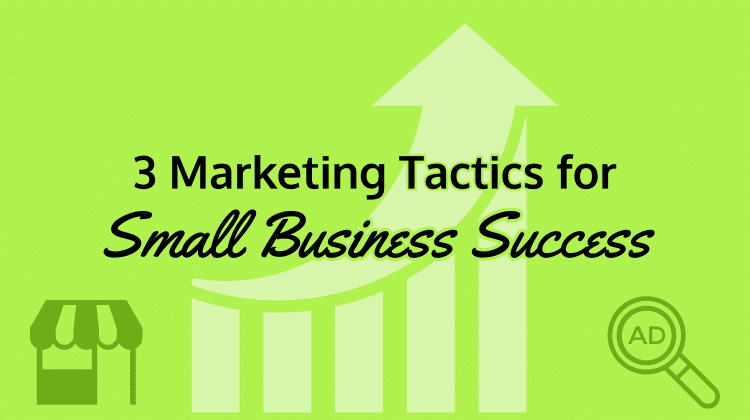
Small businesses are the cornerstone of the American economy. According to the U.S. Small Business Administration (SBA) there are more than 28 million small businesses in the United States. Of this total, nearly 36% are owned or led by a woman. Small businesses provide 55% of all U.S. jobs and have added 8 million new jobs to the economy since 1990.
Our country is a land of opportunity, where anybody who has a good idea, determination, and a willingness to put in hard work can start a business and achieve their dreams. Unlike with previous generations, such as those that powered the industrial age, our country’s small businesses no longer are restricted by geographic proximity. Today’s startups and small businesses now serve local, regional, national, and global customer bases.
And while the digital age continues to drive immeasurable change, it’s important to understand that our technological advancements do not guarantee business success. To this day, the most successful small business owners are the ones who know how to reach new customers and efficiently scale their operations.
Business still is about reaching the right prospects, with the right offers, at the right time. It’s still about marketing. In 2017, small business owners need a healthy mix of online and offline marketing to connect with prospective customers and drive sales.
Here are three marketing tactics that can help your small business move forward in 2017.
1. Personalized Direct Mail
Personalized direct mail is an offline marketing strategy that allows advertisers to deliver relevant communications to a highly-targeted audience. The ability to gather customer data has grown exponentially over the past two decades, making direct mail smarter than ever. Advertisers effortlessly can filter through hundreds of millions of consumer data points using geographic, demographic, and behavioral attributes to build mailing lists and connect with ideal prospects.
From postcards to coupons, flyers to brochures, direct mail is still the leading driver of transactions – converting sales at higher percentages than all digital channels combined. Among its benefits are the ability to reach highly-targeted audiences, send personalized communications, and increase consumer response rates. Direct mail also has proven to be more effective than digital.
2. Facebook Advertising and Video
Founded in 2004, Facebook is the largest social network in the world. According to Facebook Newsroom, Facebook has 1.86 billion active monthly users (up 17% over last year). Of those, 1.15 billion are daily mobile active users (up 25% over last year) and 1.74 billion are mobile active users (up 21% over last year). Here are a few more interesting statistics:
- Most active demographic is the 25 to 34 age group
- 66% of men use Facebook
- 76% of women use Facebook
When you distill the raw numbers, it’s easy to see why Facebook is one of the most substantial advertising channels on the web. It also means that there is a good chance your next new customer is on Facebook right now. Facebook’s advertising platform gives businesses the ability to target specific consumer groups based on demographics, behaviors, or contact information. Its ad platform also has detailed reporting tools designed to help business owners optimize ad performance and report on results.
Furthermore, Facebook video not only lets users create and produce their own video marketing content, but it also publishes it—for free—on the largest platform in the world; from the comfort of your own home. It can easily be “liked” and shared across the web, which can increase visibility exponentially.
By sponsoring video content or creating an advertising campaign on Facebook, advertisers can target specific audiences and deliver messages to hundreds or thousands of additional prospects. Videos can provide companies massive and instantaneous exposure, highly-targeted messaging, 24/7 connectivity and engagement, and the potential to increase web traffic and sales leads.
3. Follow-up Phone Calls
Marketing, whether through direct mail, Facebook, or other channels, is a powerful source of lead generation. But ultimately, the goal is to “close the deal” with each and every opportunity. Many businesses fail to do this. How many times have you filled out an online form with the promise of a reply within 24 hours or the next business day and you never hear from the company again? This is why it pays to pick up the phone and make a deeper connection with each and every sales lead that comes through the door.
A phone call is personal and meaningful. It reminds potential clients that there is a human behind the brand and gives consumers more confidence in what you are selling. It also affirms to consumers that their business is valuable and that you are interested in addressing their unique needs. In addition, following up by phone enables marketers to potentially drive more sales, create deeper connections and relationships, and humanize the eCommerce business.
When you make “real” contact—even through a phone call—you demonstrate that you care about and respect each prospect’s needs, time and business. And since business is about people and purchases, it always pays to build more meaningful relationships.
About the Author
Wendy Urquhart is a top-producing business development professional with more than 20 years of strategic account management experience. She currently serves as VP of Business Development for Taradel, LLC, a perennial Inc. 5000 marketing firm. Wendy has built strategic partnerships and managed direct mail marketing solutions for many of the biggest brands in the world.